By Alex Trukan
When selecting the attacking strategy, there are several options to choose from. One team might try to threaten the opponents on the counter-attack, another one might choose to attack quickly, and third one’s preferred option may be in turn a patient, positional attack. Regardless of what’s the team’s strongest choice, the players have to be able to execute all of the types to a good standard. For example, the team might try to utilise counter-attack, but then if the opposition gets organised quickly, the attacking players will have to consider using a more patient build-up on the opposition’s half. Positional attack requires a great balance between being patient and trying to be positive and penetrating opposition’s defence whenever possible. That’s why, players in front of the ball have to make attacking movements to be available to pass to as well as players in possession will have to be aware of the forwards options.
Options to play
One of the key requirements to make the patient attack purposeful and effective are options for the player on the ball. Opposition’s job will be to try and restrict those possibilities, whereas players on the attacking team should make themselves available whenever possible. The highest priority would be an option to play forwards, but at the same time, players will have to provide a choice to play sideways in case playing forwards is not possible. Being available to pass to as well as anticipating when the ball might come to you and planning possible choice is fundamental to progress forwards. Option to play doesn’t necessarily mean an option to pass. It can also mean an opportunity to dribble or run with the ball.
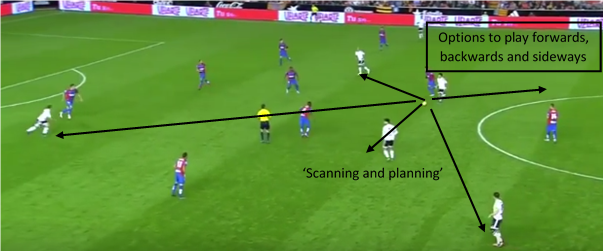
In order to create and exploit options to play, the players will have to show desire as well as movements to receive. It might be based on the movement against the flow of the ball, in behind of the defence (vertical) as well as in/out or out/in. As the opposition will be organised, creative plays are important. At the same time, players have to be aware that their movement won’t necessarily mean that the ball will be passed to them. They have to be patient and keep trying to move the opposition.
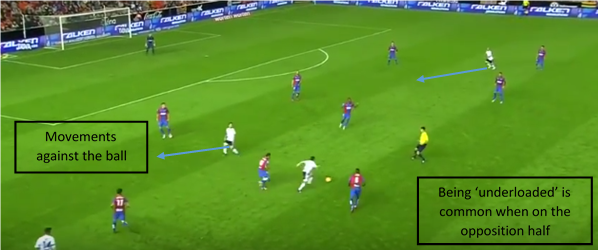
Moving the opposition
Most of the times, creating an option to pass will be aimed not only on trying to penetrate forwards, but also on shifting the opposition in order to create gaps in between, through and around them. That might mean trying to penetrate vertically, to then use a wall pass and come back opening up spaces on the wings.
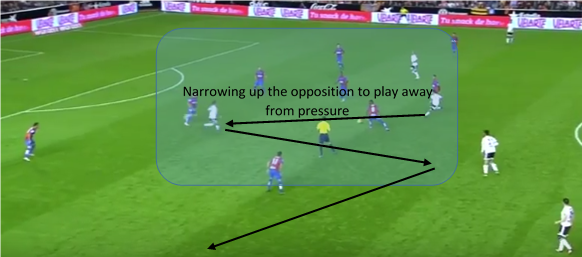
As rough guide, vertical passes open up spaces around the opposition, whereas horizontal ones, in between them. That’s why it is important to use them alternatively and be aware of the spaces they create. That in turn might create opportunities to penetrate and either pass straight into the striker in advantageous position or drive with the ball forwards.
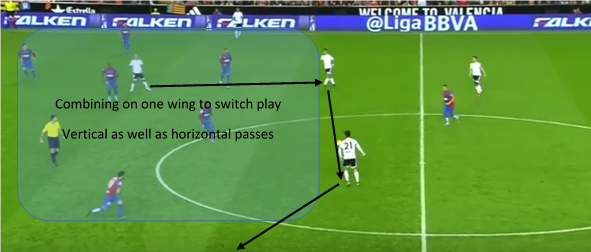
Defensive base and circulating the ball
Attacking on the oppositon’s half requires to have players around the ball, but at the same time, defensive support and cover are equally important. The more players get involved in attack, the bigger threat that will create for the opposition to counter. That is why, having sufficient amount of players behind the ball will provide a bit of security in case the team looses the ball as well as options to circulate the ball and switch play if forward options won’t be available straight away.
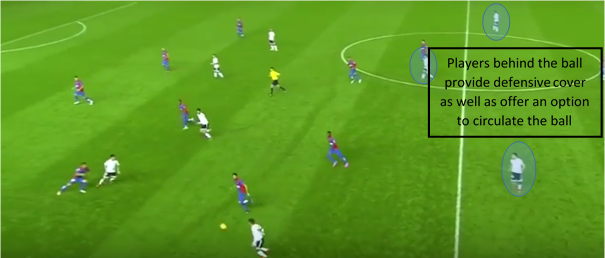
At times, that might also mean that one of the back players gets involved in attack and drives forwards, whether it’s with or without the ball. That risky option is a great opportunity to create an overload in midfield and give other midfielders an option to get into deeper position on the opposition half. It is important to recognise when to do it though. If one of the centre backs goes forwards, centre midfielder or full back have to provide support and stay in behind the ball.
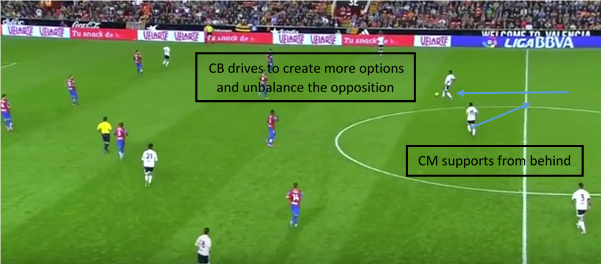
Attacking patiently requires balance between being offensively minded as well as waiting for the right opportunity. That’s why, it is important to prepare the players that it might not work straight away and will fail many times before it succeeds. Mental ability to control emotions and stick to the plan as well as being resilient are crucial.
By Alex Trukan, Development Coach, Nottingham Forest
@AlexTrukan


